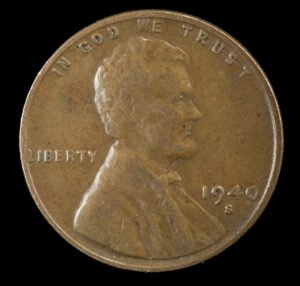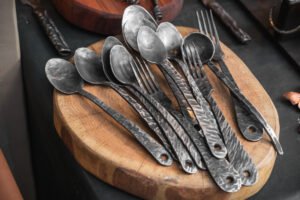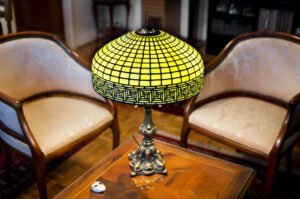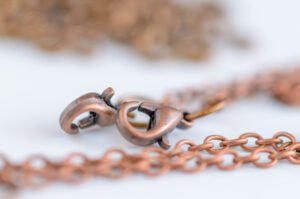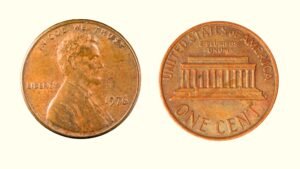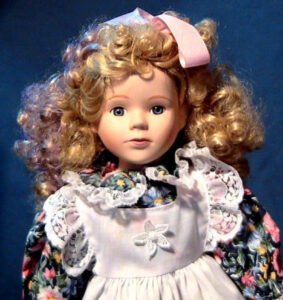If you have an old one-cent coin from 1940 with Abraham Lincoln’s profile, you might be holding a hidden gem worth thousands of dollars! That’s right! The 1940 Lincoln Penny might seem like just another piece of pocket change, but for collectors, it’s much more than that.
However, not all 1940 pennies are worth much. In fact, some are not worth anything at all. And if you don’t know what makes a 1940 cent valuable, you may lose a treasure. This guide explains all the crucial features, from mint marks to mint errors, that will help you assess the value of a real 1940 Lincoln Penny!
History of the 1940 Lincoln Pennies
The Lincoln Cent was first issued in 1909 to commemorate the 100th anniversary of Abraham Lincoln’s birth, replacing the earlier Indian Head Penny. Designed by Victor D. Brenner, the penny featured an image of Abraham Lincoln on the front and wheat ears on the back.
However, during World War II, copper was needed for the war, which changed the Lincoln penny’s composition from copper to zinc-coated steel from 1943 to 1945.
By 1959, the Wheat Penny began facing criticism for its outdated designs. Eventually, it was replaced by the Memorial Cent featuring Lincoln’s cameo on the obverse and the Lincoln Memorial on the reverse.
| 1940 Lincoln Penny | Key Features |
| Coin Composition | Bronze (95% Copper, 5% Tin & Zinc) |
| Minting Location | Philadelphia, Denver & San Francisco |
| Year of Minting | 1940 |
| Face Value | One-cent |
| Weight | 3.11 grams |
| Diameter | 19.05 mm |
| Thickness | 1.52 mm |
| Designer | Victor David Brenner |
| Mint Marks | No Mint Mark (Philadelphia Mint),‘D-mint mark’ (Denver Mint),‘S-mint mark’ (San Francisco Mint) |
| Total Mintage | 781,140,000 |
How to Spot a 1940 Copper Penny (Design & Composition)
Designed by Victor D. Brenner, the 1940 Lincoln Penny displays the following design elements to spot it among other old coins.
1940 Lincoln Penny Obverse (Heads):
- The profile of Abraham Lincoln, the 16th U.S. president
- The words “IN GOD, WE TRUST’ on the top
- The mint year “1940” engraved in front of the Lincoln’s chest
- The word ‘LIBERTY’ on the left, to Lincoln’s back
- The mint marks “S” or “D,” if present, below the mint date
1940 Lincoln Penny Reverse (Tails):

- The face value “ONE CENT” at the center
- The words “UNITED STATES OF AMERICA” below the face value
- The Latin phrase “E. PLURIBUS UNUM” in small font along the upper edge
- Two wheat ears framing the words “ONE CENT”
Coin Composition & Dimensions:
The 1940 Wheat Penny followed the traditional composition of 95% copper and 5% tin and zinc, which gave it a distinctive reddish-brown appearance and a weight of 3.11 grams. The diameter of the 1940 penny is 19.05 millimeters (0.75 inches), and its thickness is about 1.52 millimeters (0.06 inches) with a plain edge.
5 Factors to Assess the 1940 Lincoln Wheat Cent Coin Value
Generally, a 1940 Lincoln Wheat Cent is worth only $10 to $40, but certain factors, such as color toning and coin errors, can greatly impact its value. Let’s understand these factors below.
1. Coin Grade & Condition
The first crucial factor to assess is the coin condition. While you can examine the condition yourself by overseeing the sharpness of the raised designs on the coin and its toning, 1940 pennies graded by professional coin grading services hold more value.
Generally, 1940 Lincoln Pennies graded AU or MS grades are in better condition, retaining most of their original mint luster and sharper details. These coins are more desirable and command higher prices than the pennies graded in lower conditions.
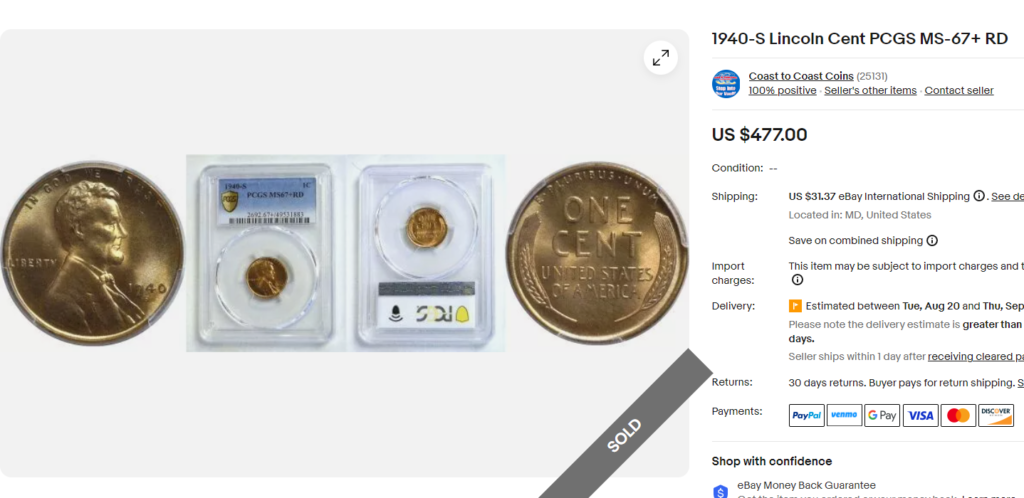
The following 1940 penny value chart will help you find the correct value of your coin based on coin grading and condition.
| Coin Grading | 1940-P Penny | 1940-S Penny | 1940-D Penny |
| Poor (0) to Extremely Fine (XF45) | A few cents | A few cents | Up to $1 – $2 |
| Almost Uncirculated (AU50) to Mint State (MS60) | Below $5 | Below $5 | Below $10 |
| Mint State (MS60 – MS66+) | $5 – $40 | $5 – $50 | $10 – $150+ |
| Mint State (MS67 onwards) | $80 – $600 (MS68 worth Up to $10,000) | $100 – $1,000 | $400 – $1,000+ |
2. Mintage & Mint Marks
In 1940, the U.S. Mints produced a total of 781,140,000 pennies. This high mintage figure reflects the robust production of this coin during that year, which impacts its current value, as it is common and readily available to collectors.

- 1940 Lincoln Penny No Mint Mark: The Philadelphia Mint produced over 586 million pennies in 1940, all with no mint mark. This high mintage number hints that the 1940-P Penny is quite common and is worth only around $100 – $600 in high grades, like MS67 and MS67+. The MS68 examples can have a high value of $3,000 – $11,000 or more.
- 1940-S Lincoln Penny: The San Francisco Mint released almost 113 million 1940 Lincoln Wheat Cents, which have a small “S” mint mark on the obverse. In commonly found grades, this coin is worth $50 – $200, with higher-grade examples selling for $400 – $1,500. One rare MS68 1940-S Penny sold for $9,600 on Stack’s Bowers.
- 1940-D Lincoln Penny: The Denver Mint struck over 81.3 million 1940 cents, identified the “D” mint mark on the obverse. The value of this penny ranges from $20 – $200 in common grades and around $500 to $1,000 in higher grades, such as MS67+.
| 1940 Penny Mint Marks | Total Mintage |
| 1940 Lincoln Penny No Mint mark | 586,810,000 |
| 1940-D Lincoln Penny | 81,390,000 |
| 1940-S Lincoln Penny | 112,940,000 |
3. Rare Mint Errors in 1940 Wheat Penny
Although not many significant mint errors have been discovered on a 1940 penny, you can still find the following common errors on this coin, which can increase its value.
Doubled Die Obverse (DDO)
This error occurs when the hubbing process results in a doubled image on the die itself, which then transfers to the coin during striking. The value of a 1940 DDO Lincoln Wheat Cent changes with the degree of doubling and coin condition, ranging from $100 – $300.
Off-Center Strikes
An off-center strike occurs when the coin is struck off-center, resulting in part of the design being missing or cut off. A 1940 Off-center error can be worth a few hundred dollars depending on the condition and percentage of off-center striking.
Die Cracks to Cuds
This error features raised lines or lumps on the coin caused by damage to the die. One example of a 1940 1C Cud Error coin is listed on eBay for about $200.
4. 1940-S Lincoln Copper Penny Proof
Apart from the regular strikes, the Philadelphia Mint also produced about 15,872 proof coins in 1940 for collectors. These special coins are struck using polished dies and planchets or coin blanks, which give them sharp details, mirror-like fields, and frosted raised designs.
As of the time of writing, the highest a 1940 Lincoln penny proof coin has been graded is PR65, which is generally worth around $1,000 – $2,700. The higher-graded coins can sell for even more premium prices.
5. Coin Colors (Toning)
Another factor that greatly impacted the 1940 Penny’s value is its color. Like many copper coins of its era, the 1940 Lincoln Wheat Penny can exhibit different color varieties due to how it was stored or handled. These color varieties are primarily categorized as Red, Red and Brown (RB), and Brown (BN).
- Red 1940 Penny (RD): A Red (RD) designation indicates that the coin retains its original red copper color without significant toning or discoloration. The RD 1940 pennies are worth the most among the three varieties, fetching up to $500 – $700 in high grades.
- Red and Brown 1940 Penny (RB): The RB 1940 pennies show a mixture of red and brown colors in different areas on the surface, indicating a little bit of toning or oxidation. This 1940 Lincoln Penny variety is generally worth only around $20 to $30 in mint state. But one rare MS67 RB 1940 Copper Penny sold for almost $200 on eBay.

- Brown 1940 Penny (BN): BN-toned pennies have undergone more extensive toning, resulting in an overall brown or dark coloration. These 1940 pennies are the least valuable ones, worth $30 in high-grade mint state.
4 Easy Steps to Identify a 1940 Lincoln Cent Counterfeit
Remember, not all 1940 pennies you come across during a garage sale or flea market sale are real. So, make sure to follow these steps to ensure your 1940 Copper Penny is real.
- Examine the Date and Design: Make sure that the mint marks and mint year numbers are perfectly aligned on the obverse. Counterfeit 1940 penny coins may have incorrect or poorly struck dates.
- Evaluate the Weight and Composition: A genuine 1940 Lincoln Penny is made of 95% copper and 5% tin and zinc. Fake pennies may use different alloys, affecting the color and weight.
- Check the Dimensions: The dimensions of a fake 1940 Lincoln penny will deviate from the original dimensions: a diameter of 19.05 mm.
- Use a Magnet: Counterfeit coins may have magnetic properties due to the use of ferrous materials in their composition. So, use a magnet; a real 1940 penny shouldn’t react.
As we’ve explored, the 1940 Lincoln Penny can actually turn into a valuable coin if it has certain mint marks, original color, or rare mint errors. So, whether you’re planning to add this numismatic gem to your collector or sell it, make sure to find its best price using this guide.
I’ve also shared detailed value guides for many more valuable American pennies, such as the 1919 penny, 1943 penny, 1945 penny, 1959 penny, and 1982 penny!
Note: This article is intended for informational, educational, and entertainment purposes only. Some images are illustrative and may not represent actual brands, products, or related entities. All trademarks, product names, brand logos, packaging, and other intellectual property referenced remain the exclusive property of their respective owners. Any brand mentions or references are provided solely for descriptive and educational context and do not imply any formal or commercial association.

